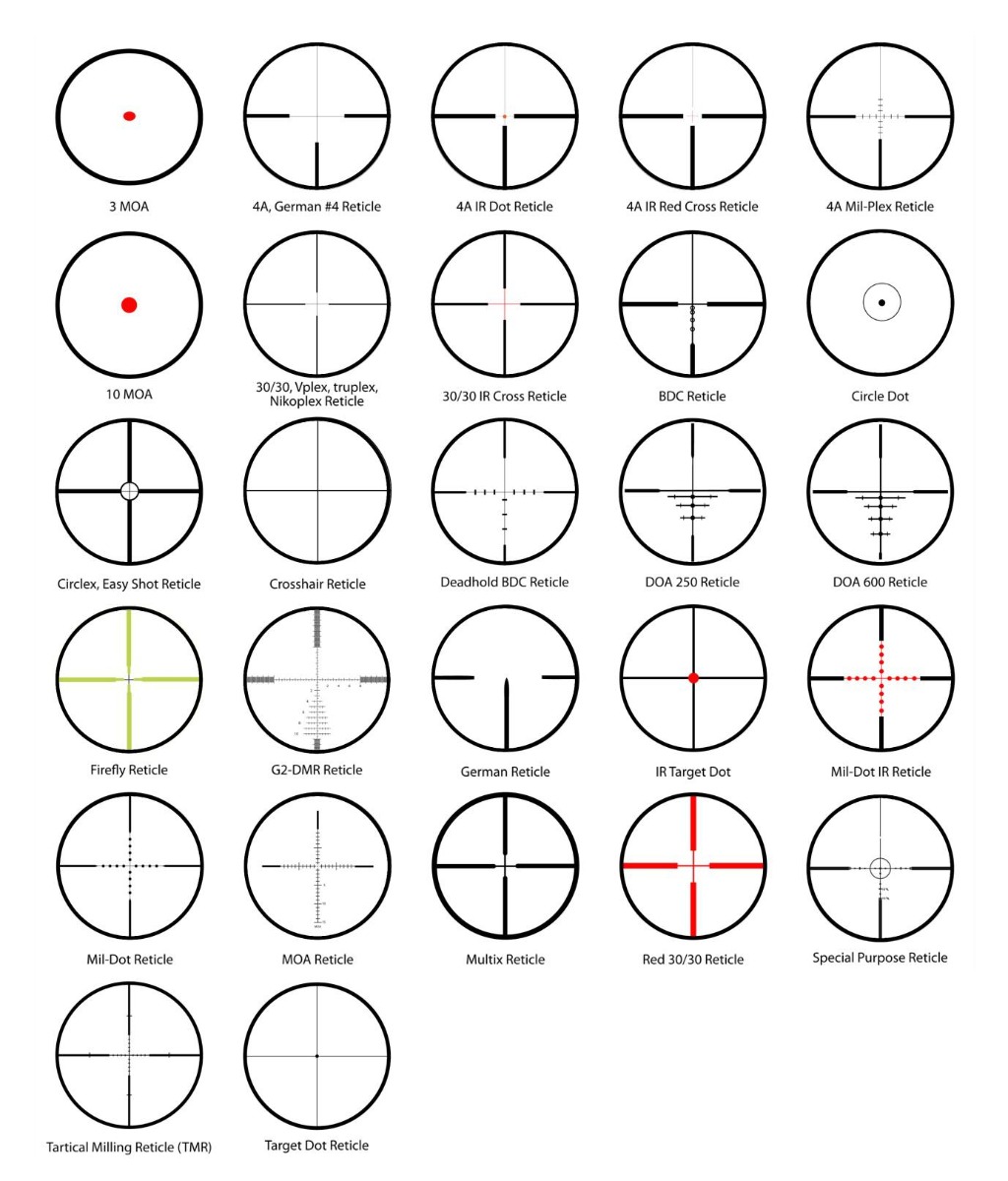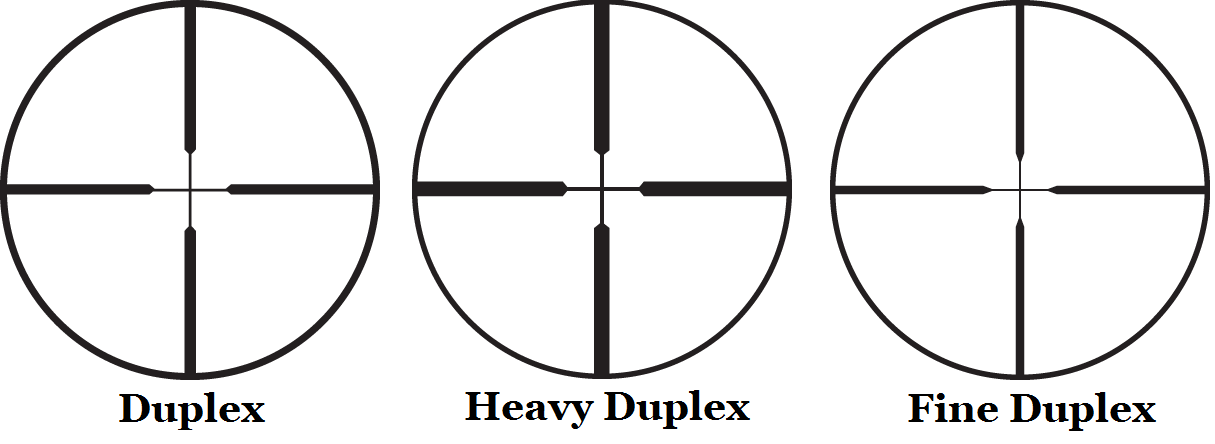
Reticles
There are many different reticles to choose from ranging from simple crosshairs to more complex to allow for range accuracy and to compensate bullet rise and fall. Here are the reticles that you will find on scopes purchased from us at OZRifleScopes

Among the common reticles available in market is the ever-popular Duplex reticles. Developed by Leupold in the 1960s, the Duplex reticle garnered its popularity due to its ease of use and has been a standard since then. Duplex reticle is characterized by its four thick crosshair gradually reduced to thinner crosshair reticles at the center. This design allows for quick and precise aiming by naturally focusing the eye straight to the reticle center. In low-light environment with limited vision, the thick crosshairs would be better in aiming targets than the thin crosshairs due to its heavier design. There are different types of Duplex reticles as well suited to your hunting needs. Fine Duplex reticles are designed specifically for tactical and varmint hunting, while the thicker kinds are more suited for big game hunting scopes. Many of the current riflescopes design are based on the Duplex design.

Recently, range-compensating reticles are favored by many, largely due to the scope reticle's ability to indicate distance hold for its specific targets. Mil-Dot Reticles is an example of range-compensating reticles. These mil-dot reticles are designed based on the original Duplex crosshair design with improvements of milliradian dots at its reticle center. If users are accustomed to mil-dot reticles, they would usually have no problem estimating distance of sizable targets with its additional aim points and making quick adjustments to wind and elevation. This is why you can see even military forces prefer the use of mil-dot reticles.
Another favored range-finding reticle is the 'Bullet Drop Compensator' Reticle, or commonly known as the BDC Reticle. BDC reticle scopes have multiple aiming points integrated in the lower crosshair of the reticle, corresponding to different target distances. This feature helps to compensate the 'bullet drop' effect' caused by gravity at the marked distances in the reticle. Thus, this unique BDC crosshair enables multiple target range sighting without the need of making any wind or elevation adjustments to the scope. However, BDC reticle scopes are only available to certain cartridges only and generally accurate past 500 meters for bullet compensation effect.
The "Dead On Accurate", or DOA Reticles, are developed and carried exclusively by Bushnell. The DOA reticle incorporates a series of aiming points together with its Rack Bracket system to expand its effective range and providing animal judgement, such as deers, at long distance. The reticle is divided into several categories of their own, distinguished by its number codes. For instance, DOA 200 reticles are designed specifically for slug guns and have aiming range up to 200 yards. This particular reticle scope is compatible with 12 gauge or 20 gauge load guns. DOA 250 reticles, on the other hand, are intended for muzzleloaders and capable of providing aiming range for up to 250 yards. The reticle scope is best set at 9x magnification for optimum performance. DOA 600 are specifically for centerfire rifles and provides aiming points at every 100 yard increment, out to 600 yards. The correct settings for the scopes that include the DOA reticles are as below:
| Scope Magnification | Power Setting |
|---|---|
| 3-9x 40 | 9x |
| 4-12x 40 | 12x |
| 2.5-16x 42 | 16x |
| 4.5-30x 50 | 20x |











